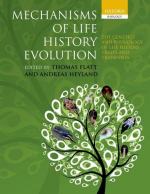|
This section contains 992 words (approx. 4 pages at 300 words per page) |

|
Anatomy is the science of the structure of animal bodies, either living or dead. Physiology is the science of the function, purpose, or action of living animal tissue. Both sciences usually study either humans alone or humans in relation to other animals.
Major skeletal, muscular, and even visceral structures were identified in many prehistoric and ancient cultures. The ancient Hindu medical and surgical system, Ayurveda, was based on extensive knowledge of anatomy and pharmacy. Anatomical models were being used in India by 700 B.C. Also advanced in surgical anatomy were Egypt, Mesopotamia, Minoan Crete, and pre-Columbian Peru. The ancient Chinese had a fair understanding of physiology, but little of anatomy, because human dissection and most surgeries were forbidden. Chinese medicine attempted to preserve health by maintaining balance between two primal...
|
This section contains 992 words (approx. 4 pages at 300 words per page) |

|


